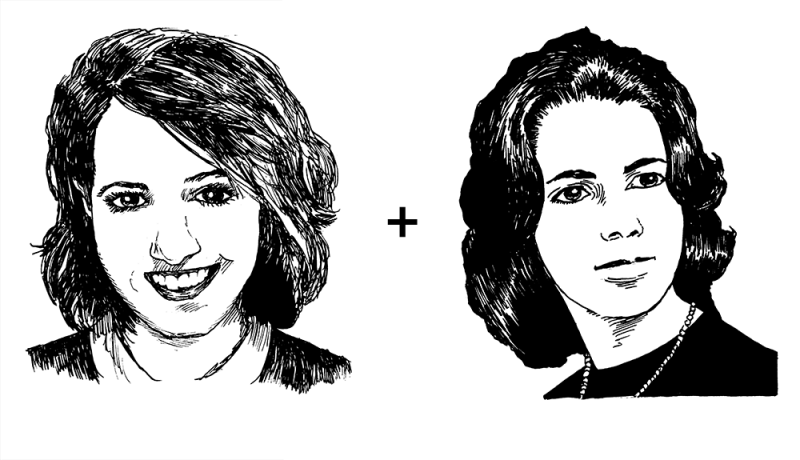“’Tis but thy name that is my enemy.”
—William Shakespeare, Romeo and Juliet
I.
I am named after the daughter my father lost.
I remember the day I first learned about her. I was eight. My father was in his chair, holding a small white box. As my mother explained that he had a dead daughter named Jeanne, pronounced the same as my name, “without an i,” he opened the box and looked away. Inside was a medal Jeanne had received from a church “for being a good person,” my mother said. My father said nothing. I said nothing. I stared at the medal.
Later that day, in the basement, my mother told me Jeanne died in a car accident in New York when she was sixteen, many years before I was born. Two other girls were in the car. Jeanne sat between the driver and the other passenger in the front seat. The driver tried to pass a car, hesitated, then tried to pull back into her lane. She lost control and Jeanne was thrown from the car and killed instantly.
“Your father blames himself,” my mother said. “He can’t talk about it.”
“Why?” I asked.
“He gave her permission to go out that night.”
After Jeanne died, my father bought two burial plots next to one another, one for Jeanne and one for himself. When he and his first wife divorced, she stipulated that he forfeit his plot, and he agreed. Soon after the divorce, he went to court again, this time for beating up a bum on the street. “Why should you be alive?” my father had asked him. “You’re not working and my daughter’s dead.” The judge remembered my father and let him go.
“Did you know his first wife?” I asked my mother.
“No, he was divorced long before I met him. All this happened in New York.”
I lived in Ohio, where my father and mother met. In my mind, New York was made of skyscrapers, taxicabs, and car accidents.
“What did Jeanne look like?”
My mother said she had never seen a photo.
That spring I painted portraits of Jeanne in watercolor. I titled them Jeanne. My art teacher told me she was disappointed that such a good student could misspell her own name. From then on, I included an i.
II.
Federico García Lorca insisted that a heightened awareness of death is a requirement for the artist. In his 1933 lecture “Theory and Play of the Duende,” Lorca attempted to define artistic inspiration, and argued that an artist must acknowledge mortality in order to produce art with duende, or intense feeling. “The duende,” he wrote, “won’t appear if he can’t see the possibility of death, if...
You have reached your article limit
Sign up for a digital subscription and continue reading all new issues, plus our entire archives, for just $1.50/month.
Already a subscriber? Sign in






